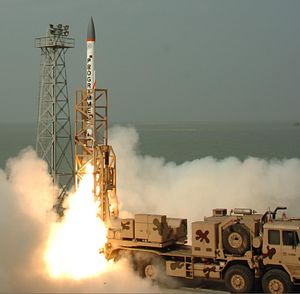India has successfully test fired its indigenously designed and built Advanced Air Defense (AAD)/ Ashvin Advanced Defense interceptor missile on Abdul Kalam Island, home to the Indian military’s principle missile test facility, the Integrated Test Range, off the coast of Odisha in the Bay of Bengal on December 28, according to local media reports.
This was the third supersonic interceptor test carried out in 2017. Other tests were conducted on March 1 and February 11. The last successful AAD interception test took place in May 2016.
According to sources within the Defence Research Development Organisation (DRDO), the Indian Ministry of Defense’s (MoD) research and development wing which oversaw the December 28 test, the AAD interceptor destroyed an incoming Prithvi ballistic missile within 30 kilometers of the earth atmosphere.
“It was a direct hit and grand success,” sources said. “Today’s test was conducted to validate various parameters of the interceptor in flight mode and it was all success,” another source added.
The single stage solid rocket-propelled AAD/Ashin interceptor missile is part of India’s planned two-layered ballistic missile defense (BMD) system and is designed to shoot down incoming enemy missiles in the endo-atmosphere at altitudes of 20-40 kilometers. AAD missiles are terminal phase interceptors capable of intercepting missiles after they re-enter the earth’s atmosphere.
As I explained earlier this year:
Following the end of the Kargil War and in reaction to China and Pakistan’s growing missile arsenals, India has been working since 1999 on a two-tiered ballistic missile defense system with the PAD [Prithvi Air Defense (PAD)/Pradyumna Ballistic Missile Interceptor] and PDV [Prithvi Defense Vehicle] designed to destroy missiles at exo-atmospheric altitudes of 50–150 kilometers (some sources say 180 kilometers).
The AAD, a hit-to-kill interceptor, constitutes the second tier defense against incoming enemy ballistic missiles. Furthermore, I noted:
The PDV is slated to replace the existing Prithvi Air Defense (PAD)/Pradyumna Ballistic Missile Interceptor, which has a maximum interception altitude of 80 kilometers. Among other things, the new two-stage solid-fueled PDV interceptor is fitted with an Imaging Infrared (IIR) seeker, developed by DRDO, to distinguish between incoming warheads and decoys.
Both PAD and PDV are designed for mid-course interception. The AAD missile interceptor features an inertial navigation system with mid-course radar updates and active radar homing in the terminal phase. It can reach top speeds of up to Mach 4.5.
India’s homegrown BMD system can purportedly intercept medium-range ballistic missiles traveling at speeds of Mach 3 to 8. Israel, Russia, and the United States are the only three countries to have successfully developed and built an indigenous ballistic missile defense system.

































